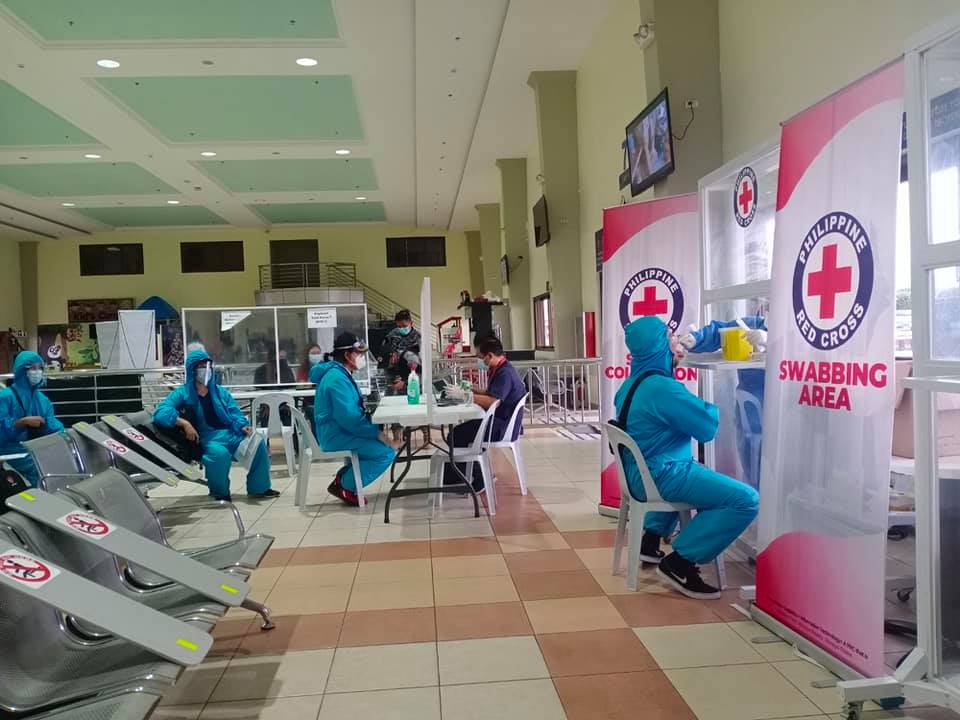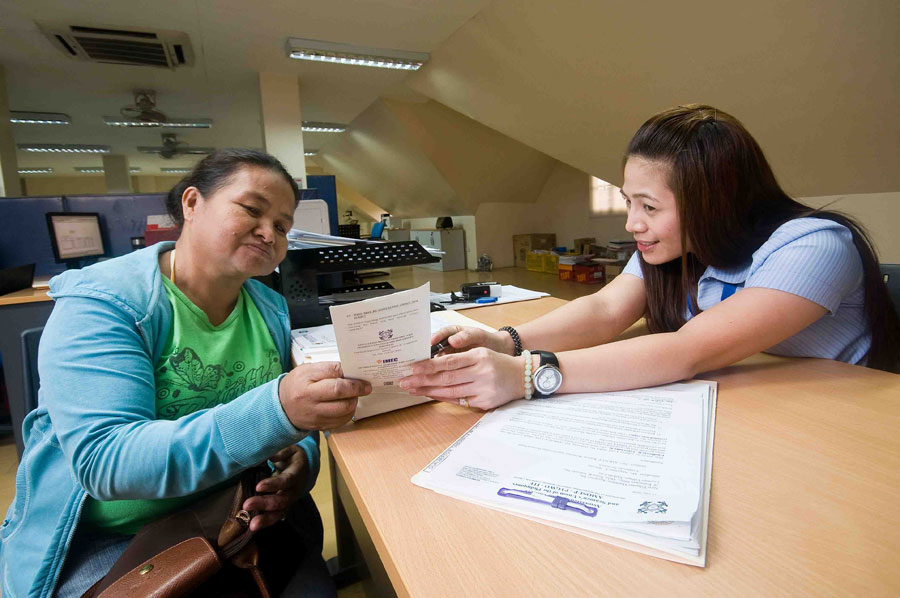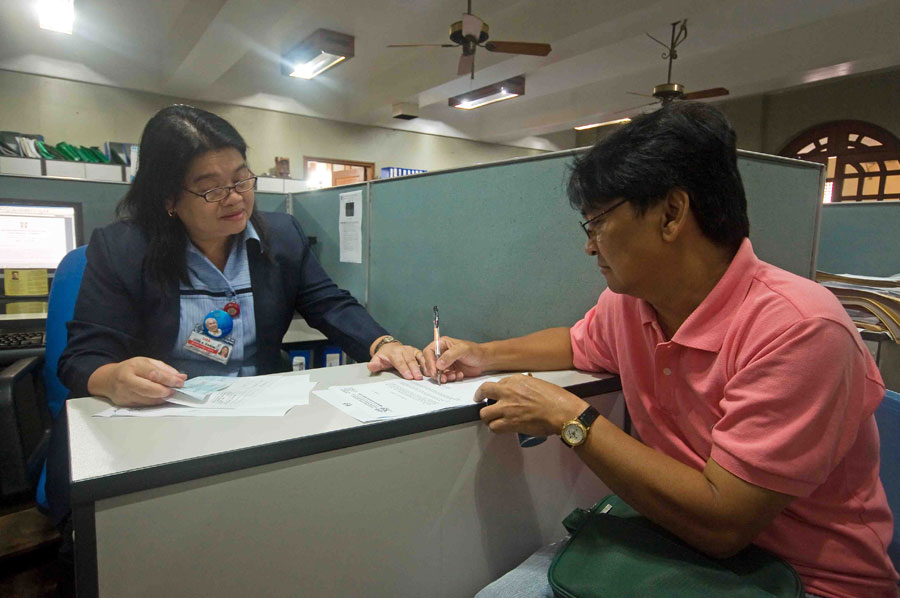Maritime stakeholders still grapple with finding solutions to the ongoing problem of relieving and sending off workforce to the world’s merchant fleets, writes Andy Dalisay
The local harbours appear to be busy for the crew swaps.
Philippine ports have performed workforce shifts for oceangoing vessels delivering and receiving close to 20,000 seafarers as part of the country’s bid as an alternative hub for crew changes during the pandemic.

Five of the country’s ports that opened with COVID-19 quarantine and testing facilities reported to have relieved and sent off a total of 19,257 Filipino and foreign seafarers as of 20 November 2020, according to Maritime Industry Authority (MARINA) Administrator, Vice Admiral Robert Empedrad, in a webinar. The webinar was hosted by Lyn Bacani of the Marino World magazine.
VAdm Empedrad said the ports of Bataan, Subic, Manila and Cebu, which have a daily testing capacity each for 1,500 to 2,000, signed on a total of 8,735 Filipino and 1,133 foreign seafarers. The facilities signed off 8,282 and 1,107 Filipino and foreign crews, respectively.
These one-stop shops for crew changes are part of the government’s “green lane” initiative that facilitates COVID-19 tests and quarantine of seafarers during embarkation and disembarkation for both Filipino and foreign crews.
Davao port has joined the league when the Department of Transportation opened it last 20 November, whilst Batangas is being readied for crew changes too.
The webinar was virtually graced by a panel of industry leaders from the side of shipowners and managers, crewing agents, unions and crew welfare interest who spoke on the ongoing crew change crisis due to the ongoing travel restrictions in many ports and cities worldwide.
Subsequently, a new dilemma emerged when crew and manning companies turned out to have poorly implemented the protocol of self-imposed isolation (minimum of 14 days) when listed for crew change.
Last October, the Australian port of Hedland sparked calls from its politicians and miners to avoid sourcing crew from Manila when a second Filipino-crewed bulk carrier in span of just over a fortnight had arrived with multiple COVID-19 cases on board. Prior to the Hedland incidents, Singapore’s Maritime Port Authority found out that there had been cases where a crewmember from Manila who joined a vessel in the island state tested positive for COVID-19.
“This difference in standards has created problems of health protocols. We need to have a unified [set of] standards for all manning agents to follow that is stricter enough to filter seafarers going on board whether in a Philippine port or taking a flight to join ship in a foreign port,” insisted Captain Belal Ahmed, the chairman of International Maritime Employers’ Council (IMEC).

“When you process a crewmember at a higher standard, you are not only allowing the crew to join but protecting the Filipinos’ job,” he said. The most important thing to do is to standardise the crew-joining protocol that is at higher level and not allowing any element to send people who are not properly screened, Captain Ahmed stressed.
The IMEC Chair was referring to the newly operational testing facilities setup in Manila by the employers group along with the International Transport Workers’ Federation (ITF) and AMOSUP. Better known as the “Safe Corridor Manila”, this initiative addresses concerns over the issue of authenticity of COVID-19 tests in the Philippines.
The testing and quarantine facilities consist of arrival and pre-departure gold-standard PCR testing of seafarers; secure certification of test results using blockchain tamper-proof technology; secure transit to airports in groups of no more than five (including driver).
AMOSUP President Dr Conrado Oca noted that the operation of the molecular laboratory and PCR testing facility runs smoothly with the capacity to provide immediate results. He said the lab has made around 3,000 tests in the couple of weeks when it started operating.
“We also opened our doors to almost a thousand seafarers stranded in Metro Manila during the enhanced community quarantine, with 500 seafarers under the union’s care in Sailor’s Home in Intramuros and more than 400 in the JSU-AMOSUP Mariners Home in Malate,” reckoned Dr Oca. The union also distributed food packs of over 20,000 to affected seafarers in Metro Manila and in provinces in the Visayas and Mindanao through AMOSUP branches in Cebu, Iloilo and Davao.
Majority of Filipino seafarers hail from various provinces, which makes it even harder for them to travel due to a string of border restrictions. Such burden has added up to the Philippines pre-pandemic woes as some countries in Asia and Eastern Europe have stolen a march on the number of Filipino seafarers on merchant ships.
Captain Kuba Szymanski, the general secretary of the International Association of Ship Managers (InterManager) says their seafarers have encountered similar travel restrictions to and from the provinces in Europe.

“But I believe we have overcome that. Now, if we don’t have enough Filipinos coming out [from the Philippines], we cannot send Filipinos back home because they are not being relieved,” Captain Szymanski conceded.
Shipowners are looking into the issue of replacing Filipinos with other nationalities, he said, asking whether it is really on a long term. “This is their statement, this is their rally to check.”
MARINA Administrator Empedrad countered that the Philippines had processed some 150,000 joiners or around 30,000 seafarers each month from July to November 2020, saying: “It is a great improvement.” The one-stop shop for quarantine procedures has opened up ports so that ships would come in for crew changes. But Empedrad admitted that crew travel in the provinces during this pandemic was really difficult.
The Philippine situation reflects the same restrictive movements of Filipino seafarers in neighbouring Asian nations for crew changes. It’s because ports in Southeast Asian countries are still unavailable for crew changes, said Mr Dario Alampay, the chairman of the Joint Manning Group (JMG).
“It seems easier to change crew in the United States and in some open ports in Europe and South America compared with neighbouring Asian countries such as Indonesia, Malaysia, Thailand and Vietnam, whose ports are not still open for crew changes,” according to Mr Alampay.
Through the Asian Shipowners’ Association (ASA), where the Filipino Shipowners’ Association sits as vice chair of the seafarers committee, Mr Alampay said they have requested these countries to open up their ports for crew changes, not only for Filipinos but for other nationalities as well. He suggested the “template of what the MARINA has done can be a good example to follow.”
Stakeholders say the pandemic continues to be a challenge for the maritime industry and they have been coalescing to try to find solutions.
“For the government, they need to do more. For seafarers and the unions, ‘frustration’ is the key word,” asserted Mr Stephen Cotton, the ITF general secretary.
Governments around the world struggle to make decisions that cross boundaries. Going forward, Mr Cotton says, “We have to recognise that moving seafarers during COVID is so expensive. And we have to find the argument for everybody up the chain to find extra cost to contribute. It’s the Philippines manning agent to convince their principal and it’s the principal to convince the client.”
The ITF has been in consultation with multinational companies about the increased cost, Mr Cotton pointed out, saying they have “left no stone unturned in partnership with IMEC and the International Chamber of Shipping to deliver that message.”
Even though the industry is positive about the vaccine, the ITF general secretary added that “what we really want to buckle down is how to secure the vaccine for our seafarers. Because that’s critical.” SF







